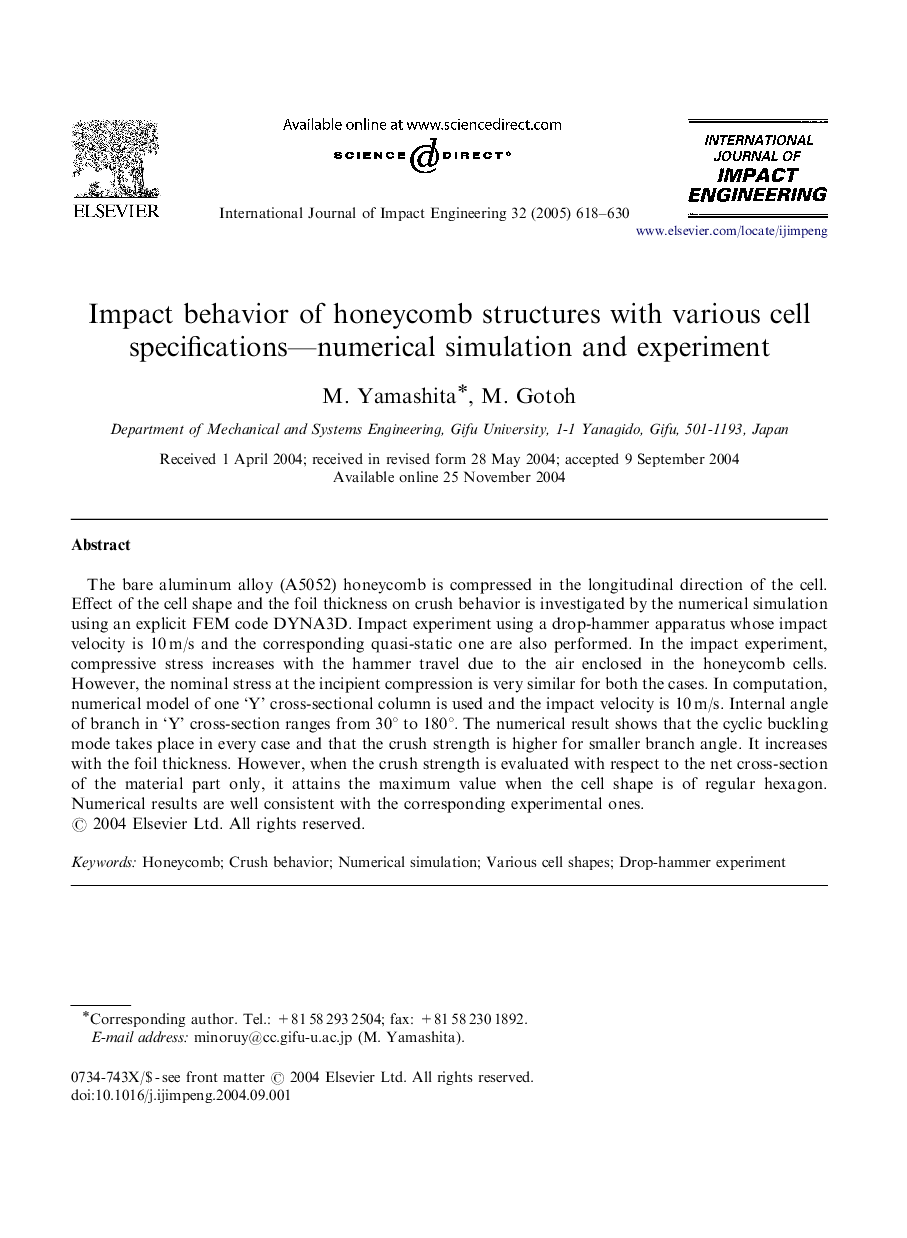| Article ID | Journal | Published Year | Pages | File Type |
|---|---|---|---|---|
| 9704671 | International Journal of Impact Engineering | 2005 | 13 Pages |
Abstract
The bare aluminum alloy (A5052) honeycomb is compressed in the longitudinal direction of the cell. Effect of the cell shape and the foil thickness on crush behavior is investigated by the numerical simulation using an explicit FEM code DYNA3D. Impact experiment using a drop-hammer apparatus whose impact velocity is 10 m/s and the corresponding quasi-static one are also performed. In the impact experiment, compressive stress increases with the hammer travel due to the air enclosed in the honeycomb cells. However, the nominal stress at the incipient compression is very similar for both the cases. In computation, numerical model of one 'Y' cross-sectional column is used and the impact velocity is 10 m/s. Internal angle of branch in 'Y' cross-section ranges from 30° to 180°. The numerical result shows that the cyclic buckling mode takes place in every case and that the crush strength is higher for smaller branch angle. It increases with the foil thickness. However, when the crush strength is evaluated with respect to the net cross-section of the material part only, it attains the maximum value when the cell shape is of regular hexagon. Numerical results are well consistent with the corresponding experimental ones.
Keywords
Related Topics
Physical Sciences and Engineering
Engineering
Mechanical Engineering
Authors
M. Yamashita, M. Gotoh,
